Og.klik påb For sources and references:
Og.klik påb Click on the yellow and see if you get useful details.
Og.klik påb Click on pictures for more details.
______________________________________________________________________
In a way, it was Germany that took the lead, when Europe, after the German reunification, began to limit the use of nuclear energy. .
It’s hard to find anything but political motives.
The first is a summary of information from the Danish organization REO, who advocate a balanced assessment of energy, particularly nuclear energy.
- Five reactors in the former East Germany were closed during the German Reunification.
- Four reactors in Bulgaria and Slovenia were closed as a condition of access to the EU.
- Three reactors in Germany were closed before the disaster at Fukushima.
- Eight other German reactors were closed after the disaster at Fukushima.
- A complete reactor in Austria and another in Germany have never been put to use.
- One more reactor was closed December 2017.
Also this reactor had been running without problems.
In addition, two reactors at Barsebäck (Sweden) were closed, also due to political pressure.
Thus we have closed for 15 GW of clean energy that could easily be available today.
In order to maintain the supply and the green model, Europe, and especially Germany, has spent huge amounts on solar energy and wind power.
Nevertheless, it has been necessary to start the construction of
12 GW of new coal-fired power plants.
Equivalent to about eight modern reactors.
The consequence of this has been:
- Additional greenhouse gas emissions equivalent to twice the Danish emissions.
- General air pollution, also with radioactive substances.
- Growing cost of energy.
- A hopeless dream about balancing variations in the production of solar energy.

- Declining economic sustainability for industri.
- Destruction of villages in order to give room for more strip-mining.
- Large expenses for industries due to instability in the net.
- Economic losses for investors who (naively) invested in wind power.
- Complaints about noise and destroyed land-shape due to the wind turbines.
- And even:
A completely unfounded resistance to English nuclear power.
Now slowly:
A basic understanding of the fact that it will not even be green.
AND
From many sides a beginning distrust in the sustainability of the ambitious plans.

Repeated concern that Germany is ruining both land-shapes and economy.
But even destroys the climate
In order to save it.
.
And now, after many years, we start to understand, that most of the horror-stories about radiation at Chernobyl is nothing but the usual falsifikations from Greenpeace and followers.
All this can naturally be done in a rich country.
Still it may be difficult.
But in Germany it is apparently felt that it will be the end of the world if there should be a serious accident at a nuclear power plant.
And then, (March 2016) Der Spiegel got the curage to explain how all these expensive measures were unnecessary and that the fear of nuclear energy was grossly exaggerated.
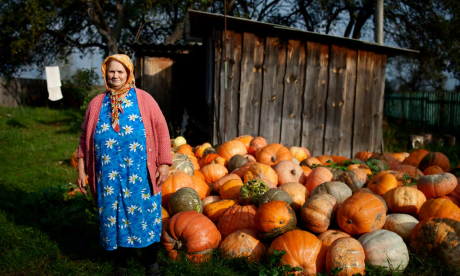
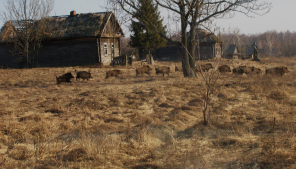 But no matter what:
But no matter what:
Some live happily in the highly contaminated area of Chernobyl.
They are more afraid of starving than they are for radioactivity.
And the animals,
they understand nothing.
BUT
It is high time, we should understand
With the following, from Der Spiegel (March 2013), there are signs to suggest that the “Greens” are beginning to understand – Slowly.
Although this conflict touches all political parties, none is more affected than the Greens.
Since the party’s founding in 1980, it has championed for a nuclear phaseout and fought for clean energy.
But now, that this phaseout is underway, the Greens are realizing a large part of their dream – the utopian idea of a society operating on “good power” – is vanishing into thin air.
Green energy, they have found, comes with an enormous cost.
And, the environment will also pay a price if things keep going as they have been.
In Germany they have reached a typical ”Bureaucracy Monster”:
From Der Spiegel October 2013 I quote:
And let’s not forget that the German bureaucrats have come up with over 4,000 different subsidy categories for renewable energy, apparently adhering to the principle that what is particularly expensive has to be lavishly subsidized.
Therefore:
August 2016 we read that Germany will change the subsidy system.
It will mean that they will leave the existing system based on
feed-in tariff in favor of a system based on plans to auction contracts to deliver “renewable” electricity to the lowest bidder.
The controversial nuclear power is clean.
You will have enough uranium and thorium for some 100,000 years.
Still it can not be defined as renewable / green.
Only reliable.
Now, 2018
the “Green” in Finland starts to support Nuclear Power as the way forward to cheap and pollution-free power.
I dare to ask: When will Germany surrender?
The not so distant future:
Trillion-euro cost of German energy transition
German energy and environment minister Peter Altmaier said that costs for the plans to reform and restructure the country’s energy sector by the end of the 2030s could reach $ 1 trillion.
This amount will correspond to the fact that every German – children as old – will pay 1.5 Euro daily in the period from 2010 when Energiewende was launched, until 2030 where it can no longer be hidden that the money was wasted.
And much more
January 2017 The Energy Collective gives a very long attempt at an assessment.
Information and claims are pointing in all directions.
But the truly devastating rule is that “Green Energy” has got
Network Priority.
This means that “The Others” are reduced to be backup and ‘shall just’ stay idle until they are called up when suddenly needed.
Although it is destroying the economy, it is ‘just’ assumed that “the traditional” must continue to be available.
If information from The Energy Collective is reliable, the cost associated with this will amount to € 20 billion per year, corresponding to the price of building four new reactors annually. As exported from Korea.
New reactors are better when it comes to ramp-up and down.
More than enough to follow the changes in the load.
Still:
The risk of Xenon poisoning (Xe135) and a disaster like at Chernobyl
will make it very difficult for nuclear power to be used as backup for the unreliable solar and wind.
Agora Energewende Review 2014 provides a wealth of data that seems to be carefully selected.
But, no matter what, it can be seen that the German “traditional power plants” have still been able to balance the network.
Der Spiegel, despised by the green, provides information on Dunkelflaute, which means “dark windless”.
I’ve tried to evaluate this on another page.
Although I have said it many times:
Der Spiegel writes that the dreaded radioactivity may not be as dangerous as we have been told.
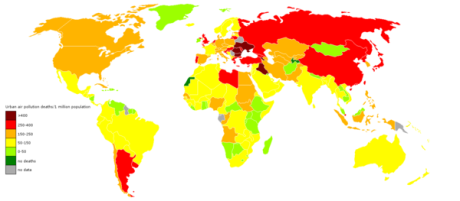 It appears from the above that Germany, although they are working hard to become green and free of pollution – – –
It appears from the above that Germany, although they are working hard to become green and free of pollution – – –
Yes they can not even see the rear wheel from “Atom-France”.
An interactive diagram can be seen by clicking here.
The page is slow, but it is worth the efforts.
March 2017, you read on The Energy Collective that we can either repeat Germany’s mistakes or learn from them.
Apparently, the German population does not want to learn.
On another page, also from The Energy Collective, shows that Germany’s electricity is almost 10 times more polluting, compared to the French.
You get data from 2016.
Germany generated 545 TWh and polluted 560 g CO2 per kWh
France generated —530 TWh and polluted –58 g CO2 per kWh

Also.
Although I have said so many times:
Der Spiegel writes that the feared radioactivity may not be as dangerous as we have believed.
Problems related to management of the network.
Very rarely we find information about the costs of Energiewende.
From The Energy Collective Collective, I have the following information.
Redispatch (Redistribution)
In periods, there is not enough capacity to transfer the energy.
This means that the cheapest energy can not be sold and the “net” is forced to use more expensive supplies.
For example, if there is a lot of wind in northern Germany and a great need in southern Germany.
bla Year – Number of days – Energy – – – – Costs
bla 2013 – – 223 – – – – – – – – – – – – – – 137 million €
bla 2014 – – 330 – – – – – 5.197 GWh – – – 187 million €
bla 2015 – – – – — – – – 16.000 GWh – – – 412 million €
Curtailed energy
In periods, there has been more energy (from the sun) than the demand.
Here we have the following:
bla Year
bla 2013 – – 555 GWh
bla 2014 – 4.722 GWh
The figure below gives an overview of the costs (Million €/year).![]()
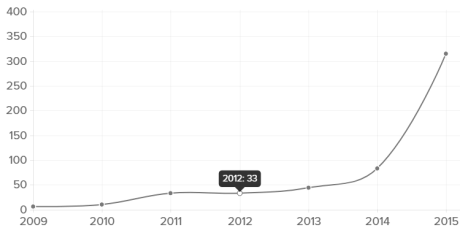
What has been the costs for all this?
From The New York Times Dec. 25, 2017, I quote:
- Germany has spent $ 200 billion over the past two decades to promote cleaner sources of electricity.
I dare to correct: Not even clean.
This amount ($ 200 billion) corresponds to the price of 40 new reactors similar to those exported from Korea to the UAE.
And about the same if considering export from Russia.
Or about 15 of the unreasonably expensive reactors under construction in England.
May be the realities will be seen.
Especially when we consider that the “green energy” does not come for free.
But also in the United States
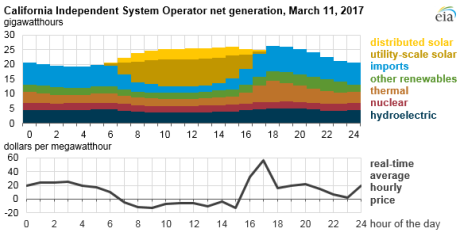 Without having more than a suspicion, I claim, that “own use” of electricity from solar is excluded from the data used for the figure above.
Without having more than a suspicion, I claim, that “own use” of electricity from solar is excluded from the data used for the figure above.
Conclution
Dear unknown reader:
Try to consider the above and draw your own conclution.
In the meantime I ask:
Are we, in Denmark and especially in Germany, behaving as the man, jumping out of an airplane – without a parachute – saying:
“Look it is fine. Soon I will be halfway and everything is going well.”